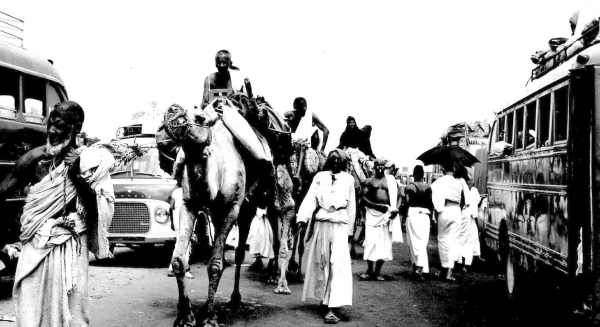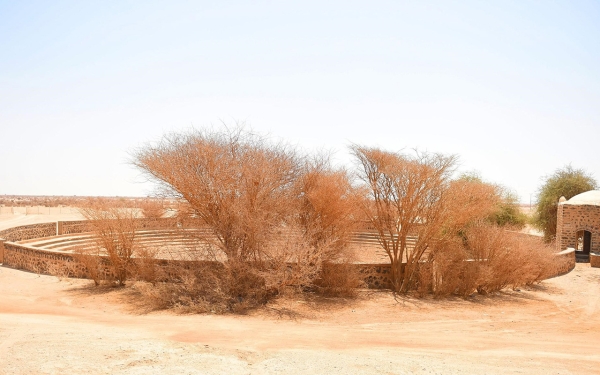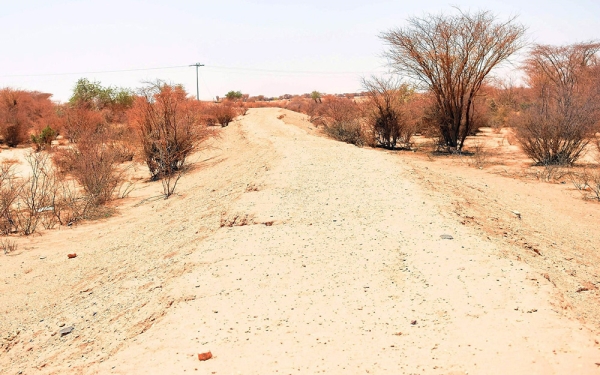



Kufa-Makkah al-Mukarramah Route
It is one of the most prominent Hajj routes during the Islamic era, famously known as 'Zubaida Trail', a reference to Zubaida, the wife of Caliph Haroun al-Rashid, who contributed to its construction. The number of stations along this route is twenty-seven, namely al-Usaylah, al-Muhaddath, Batin Nakhel, al-Hassilk, al-Makhoulin, al-Suqrah, al-Turuq, al-Rukabiyyah, and al-Madinah al-Munawwarah. Basrah route intersects with Kufa route in Ma'adin al-Nuqra.
Basrah-Makkah al-Mukarramah Route
The route starts from Basrah City, passing by the northeast of the Arabian Peninsula through Wadi al-Batin, crossing several desert areas, the most difficult of which is al-Dahna' Desert. Then, it passes through Qassim Province, after which the road runs parallel to Kufa-Makkah al-Mukarramah Route until both routes meet. Its stations include al-Munjashiyyah, al-Hufair, al-Rahil, al-Shaji, al-Ruqayi'i, Judaylah, al-Dafinah, Qiba, and Maran, until it reaches Umm Khurman (Awtas).
Egyptian Hajj Route
Pilgrims from Egypt and those accompanying them from Morocco, Andalusia, and Africa take this route heading to Sinai Peninsula to reach Aylah (al-Aqabah), then Haql, al-Shurf, and finally Madian (Maghair Shuaib-al-Bad'). After their journey from Madian, Egyptian pilgrims used to take two routes: an inland route and a coastal route. The inland route heads southeast, passing through Shughob, then Bida, followed by the Wadi al-Qara region, where it meets with the Levant Hajj Route in as-Suqyah (al-Khashibah), following it along to al-Madinah al-Munawwarah.
Levant Hajj Route
The route connects the Levant with the holy sites and is named al-Tabukiyyah, in reference to Tabuk through which it passes. Its route starts from Damascus, passing through Basra al-Sham (Dar'a), Athru'at, Ma'an wal-Mudawwarah, Halat Ammar, then That al-Hajj in Tabuk, then al-Aqra', then al-Akhdar (al-Muhaddathah Station), followed by al-Mu'adham Station, al-Hijr, al-Ula, and finally Qarh.
Yamani Hajj Route
The routes taken by Yemeni pilgrims are diverse and varied. Major Yemeni cities such as Aden, Taizz, Sana'a, Zabid, and Sa'dah served as departure points for those pilgrims. Some routes of these routes are intersected, like the Taizz-Zabid Route and the inland Sana'a-Sa'dah route. Yemeni pilgrims used to take three main rods: the coastal route, the inland or middle route, and the upper route, each with its specific paths and stations.
Yamani Upper Hajj Route (al-Najdi)
It connects Sana'a and Makkah al-Mukarramah and is considered one of the historically and culturally prominent routes. It is known as the Mountain Road, starting from Sana'a and heading towards Sa'dah, then al-Irqah, al-Mahjarah, Areenib, Suroum al-Ghayd, al-Thijjah, followed by Bishah, then Tibalah, al-Qurayha', Kura, Turubah, as-Safn, al-Unq, and Ras al-Manaqib. It then deters westward to Qarn al-Manazil, then onward to Makkah through az-Zimah and Taif along al-Sail Road.
The two Omani Hajj Routes
Omani pilgrims would take these two routes, one of which heads from Oman to Yabrin, then to Bahrain, followed by al-Yamamah, to reach Dariyah, the gathering point for pilgrims from Basrah and Bahrain. After performing Hajj, the pilgrims would part ways, where pilgrims from Basrah would head north while Bahraini pilgrims would go right. In addition, caravans coming from Oman could traverse al-Ahsa to meet up with al-Yamamah-Makkah al-Mukarramah Route.
Related quizzes
Related articles


